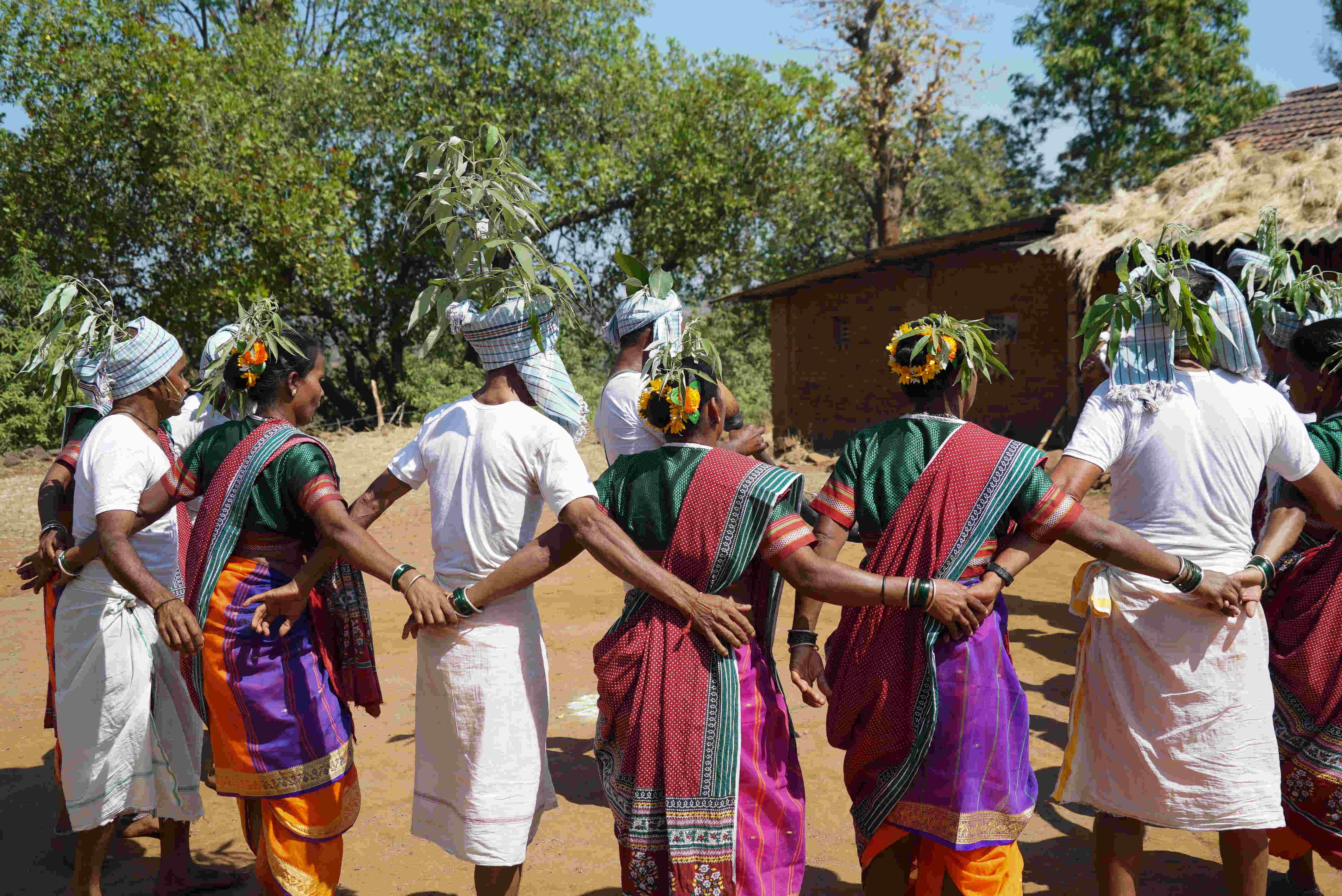tribal dance
Tarpa Dance, maharashtra

Tarpa dance is done during the harvest season. Named after the Tarpa; a one-of-a-kind instrument; played by individuals who belong to Warli Tribe. A wind instrument which consists of dried gourd, bamboo and beeswax; the Tarpa has a low sonorous sound that resonates across the hills. This Warli tribe resides primarily in Maharashtra State coastal region. Warlis inhabit Jawhar, Vikramgad, Mokhada, Dahanu and Talasari talukas of Palghar district in Maharashtra's northern region, Nashik and Dhule portions and Navapur taluka of Nandurbar in Maharashtra. In their mythology, their goddess, Dongarya Mawli, has to be called upon prior to the playing of the Tarpa. Their conviction that this dance will infuse the cultivating crops with needed vitality for a bountiful yield.
Here, three generations dance in one group, including grandparents, mothers, fathers, grandchildren, & great-grandchildren. This dance is called organized and disciplined dance. A Tarpakari is creating your rhythmic song. And the Ghungru Kathiwala (Director of the Dance) directs all the dancers. They make the entire village dance according to his rhythm. In order to join this dance, one has to hold hands with the last one. The entire idea is that once you join you cannot leave till the dance is finished. The dance is for hours with all engrossed in the rhythm and melody created by the Tarpa and Ghungru Kathi (Bell stick).


For Warli, this dance was entertainment, a way of unwinding after a day's toil in the fields. After the festivities of Nag Panchami; tarpa dance can be held on every festival day, till Diwali. Tarpa dance begins from Dussehra festival and gets performed right up to Shimga Holi festival. The Tarpa dance takes place predominantly on nights when the moon is bright, and the tarpa attracts youngsters and elders alike to participate in the sheer happiness of the dance. No songs are ever sung, and it is simply the tonal variations in the tarpa's notes that control the pace and rhythm of the dance. Men and women join hands, marching in time with the rising tempo with steps and movements that evoke the natural world and their own lives.
There is full of traits in each person's costume in this dance. The costume has a distinctive overall meaning in dance. The dress of Tarpakari is unlike any other. But Ghungru Kathiwala (Director of Dance) wears traditional clothing like the rest of the dancers. Women join in by dressing in unique costumes. All women join in by dressing in garlands, braids and flowers that she will have in her hair. This dance is extremely charming and sort of silent. No noise, no chaos, only melody, rhythm and cadence are the characteristics of this dance. This dance is an effort to depict the unity and discipline of the tribal society.


Tarpa is a special instrument in this tarpa dance. It is prepared by the tribal musicians themselves. The player of tarpa is an extremely significant character in this dance. It cannot be played by a normal player. It has a traditional foundation. The Tarpa is built with easily obtainable materials in a forest. It is prepared using the thick hide of a whole gourd in which a bamboo pipe with finger holes is fitted to create a wind instrument. It is adorned with colored threads and the fronds look like the peacock's feather. The instrument can also be played during occasions like marriages and festivals; when instruments such as the Dhak, Dhol, Dholki and Ghangli play musical accompaniment.


